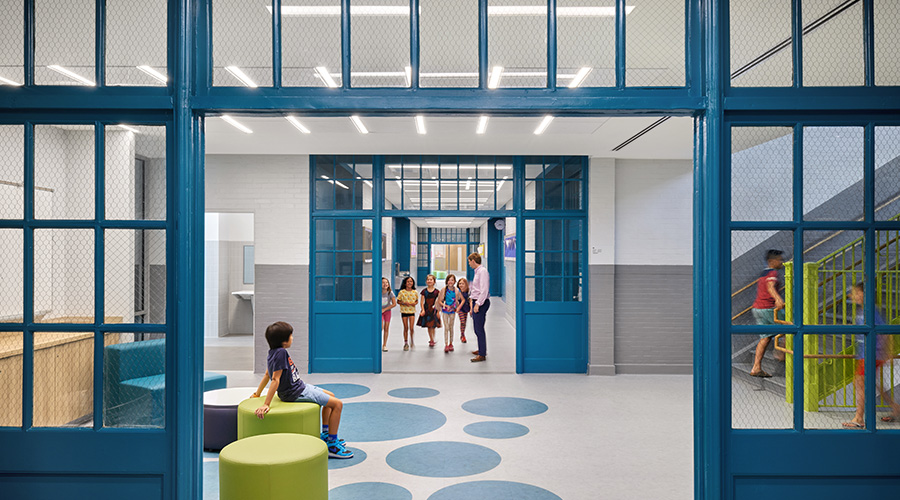Utility Bills, Submeters and BAS Offer Options for Monitoring Energy Consumption
OTHER PARTS OF THIS ARTICLEPt. 1: This Page
When trying to identify cost-saving measures, many facility managers face the same issue: They do not have records to accurately determine where energy is being consumed. The lack of energy measurement and tracking makes it difficult to prioritize operational changes for energy savings. What's more, not monitoring energy use can allow easily corrected operations and maintenance issues in HVAC systems to go undetected, costing the facility money.
What can be done? The most basic approach is to review utility bills. These can include information such as on-peak, intermediate-peak and off-peak energy use, and demand charges. By recording this information for an extended period of time, facility managers can better understand the building's energy use through the year.
Utility bill information allows for specific analysis to be performed, such as energy use intensity (EUI) analysis. EUI is the energy consumed over the course of a year per square foot of space. Monthly consumption can be graphed to identify trends in energy use. Spikes or unusual consumption patterns may indicate that the building is not being operated optimally for the season or that issues with building systems are present.
Demand charges are also important to consider. Demand charges are typically applied to the quarter or half-hour period containing the highest power consumption during the billing month. Demand charges can account for a significant portion of the energy bill and provide opportunities for savings, both monetary and energy. Facility managers who understand the building's demand usage may choose to reduce demand charges by incorporating strategies such as an optimized start of air-handling units in the morning to prevent them from starting simultaneously.
Other forms of analysis include degree-day analysis, regression analysis, load factor calculations, and building modeling. A qualified building energy modeler can be of assistance with these forms of analysis.
Getting More Detail
If utility bills alone do not provide enough information, facility managers may opt to install submeters on high energy-consuming systems and spaces like chiller plants or data centers, which offer the potential for the most savings. If the cooling system accounts for a high percentage of building energy use, monitor that system. In addition, the cooling system lends itself to low-cost operational and maintenance changes to reduce energy use.
A common location for submeters is data centers, which are notorious for consuming large amounts of energy. Not only will a submeter pinpoint actual energy use of the space, but it will also quantify energy savings of implemented energy efficiency measures.
An added benefit is that prospective tenants are becoming more and more interested in spaces that provide submetering and other energy-efficient design elements. Submetering offers a more appealing space for tenants wishing to pursue a sustainable workplace.
The initial cost of submeters can be an obstacle to installation, but they can more effectively identify correlations between building operations and energy use, allowing for better energy optimization.
Installing submeters takes careful thought and planning. Many times, when installing a submeter, the area will need to be shut down temporarily while the work is performed. But data centers often operate without interruption. It is important to consider the downtime of the data center if a submeter is being considered and determine if any downtime is possible.
When installing additional meters, it is important to ensure that valuable information will be received in return. It may be beneficial for a qualified energy manager to determine which systems and spaces use the most energy. An energy manager can then develop a computer model of the building and break down energy use by systems and sub-systems.
If a more detailed level of analysis is desired and the technology is present, many BAS have trending capabilities that allow energy use to be tracked and recorded. If a sophisticated BAS is used for measurement and verification, the rewards can be even larger due to the high level of building control the system offers.
Justifying the Cost Of Energy Tracking
The biggest challenge to energy measurement and verification is justifying the cost. The most basic selling point is that measurement and verification can save the building money. For example, monitoring and analyzing energy use may show that outside air economizers are not operating optimally during the shoulder months of the year, providing an opportunity for energy and cost savings.
What's more, measurement and verification may help to attract and retain tenants. In these tough economic times, providing an edge over the competition can help justify energy measurement and verification.
Another important aspect of metering is that it enables a building to be benchmarked against similar buildings. For example, the Energy Star Portfolio Manager allows facility managers to benchmark their buildings against comparable buildings. It provides an Energy Star rating on a scale of 1 to 100, with a higher score indicating better energy efficiency. Buildings with a score of 75 or greater can qualify for an Energy Star Label. Not all buildings can be rated, however.
CBECS, largely the basis for the Energy Star rating, can be used for benchmarking should the building not be able to use the Portfolio Manager. CBECS is a survey performed by the United States' Energy Information Administration that collects information on US commercial buildings, including their energy-related building characteristics and their energy consumption and expenditures.
Monitoring building energy use is a key step in reducing the overall energy use of a building. Careful monitoring can help identify failed or failing equipment or energy-saving changes to operations and maintenance procedures. Additionally, monitoring energy use will allow facility managers to gauge the effectiveness of implemented energy-efficiency strategies.

David Cosaboon is a staff engineer at Facility Engineering Associates. He has performed equipment inventories and condition assessments for clients including the Montgomery County Park Commissions and the Smithsonian Institution. He is also a member of the American Society of Mechanical Engineers (ASME).
Related Topics:












